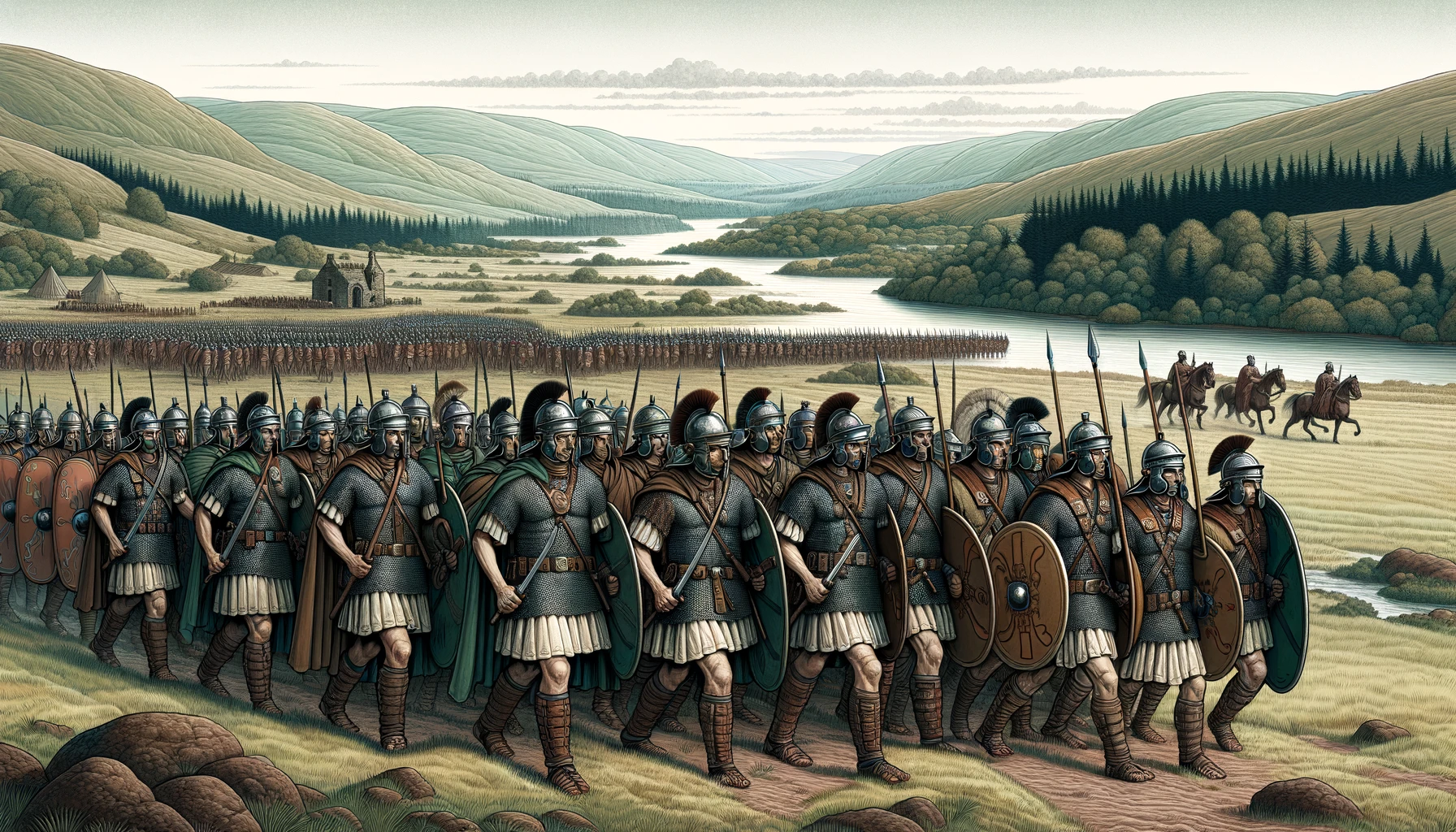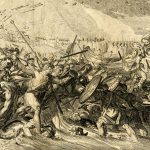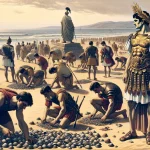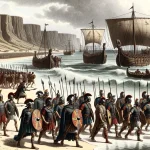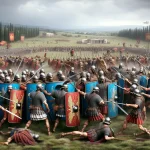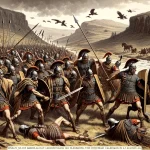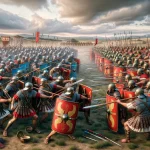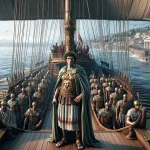Julius Caesar’s Invasion of Britain (55–54BC)
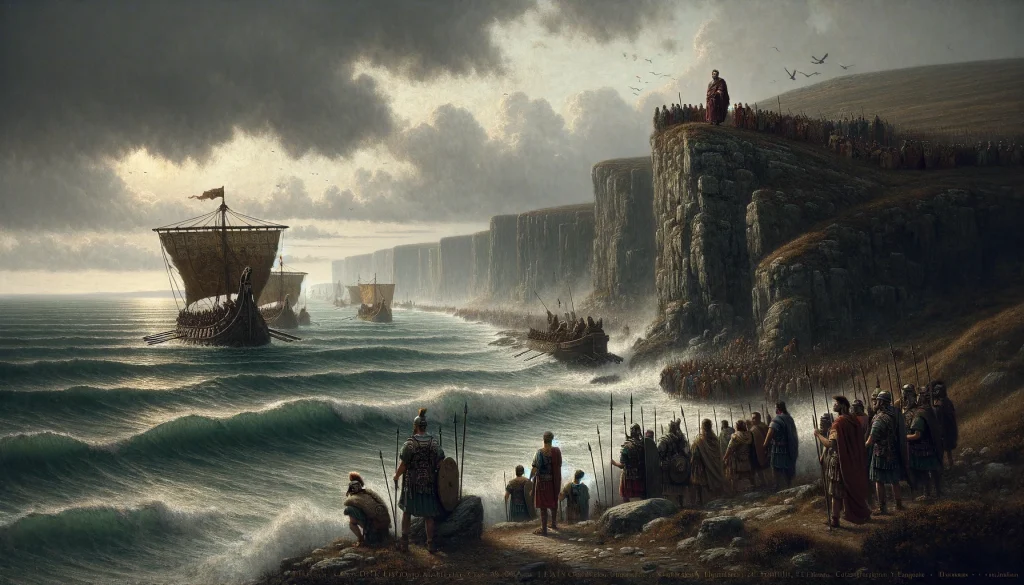
The Romans were aware of Britain’s existence well before they chose to invade it. During his military campaigns in Gaul from 58 to 50 BC, which resulted in the Roman conquest of present-day France, Belgium, Luxembourg, and Switzerland, Julius Caesar became acquainted with the British peoples. In the course of these campaigns, he embarked on two military forays into Britain in 55 and 54 BC. While these expeditions were not aimed at, nor did they lead to, a full conquest, Caesar managed to impose tribute upon certain British tribes. Moreover, he acquired valuable insights into the natural resources of southern Britain and their prospective benefits for Rome.
Between the Invasions
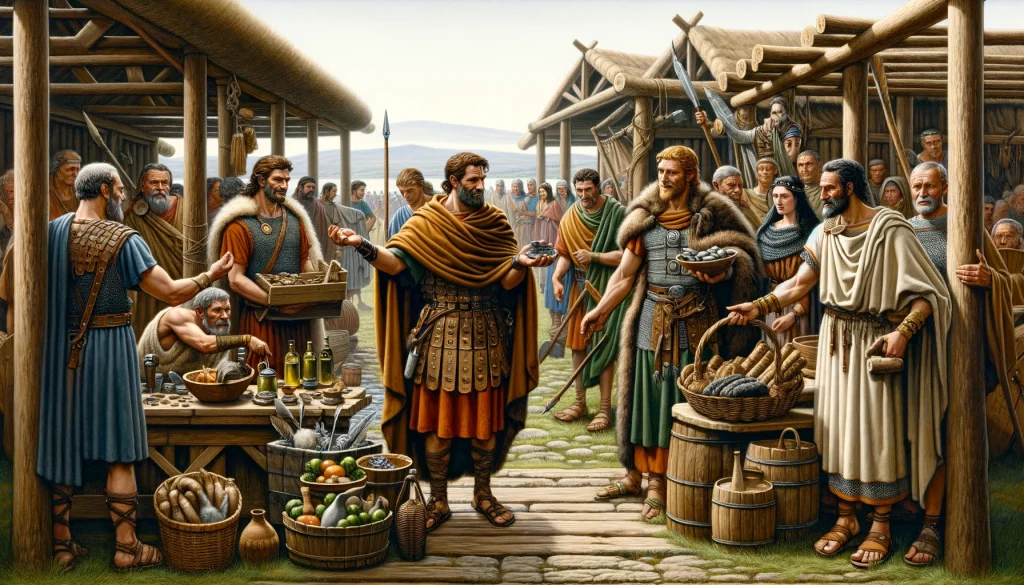
Over the hundred years following Caesar’s expeditions, interactions between the Britons and Romans intensified. Tribes like the Atrebates in central southern Britain not only engaged in political and trade relations with Rome but also began to assimilate Roman customs. This is evident in places like Silchester (in Hampshire), which evolved into a town with structured streets, and where inhabitants imported Roman luxuries like wine and olive oil. Conversely, tribes like the Catuvellauni, located more to the north and east, maintained a stance of caution or outright opposition. Planned invasions under Augustus were called off in 34, 27, and 25 BC. The Roman Emperor Caligula who was known for his eccentric and sometimes brutal leadership, and he famously planned a second invasion of Britain in AD 40.
Claudian Invasion and Conquest (43–60 AD)
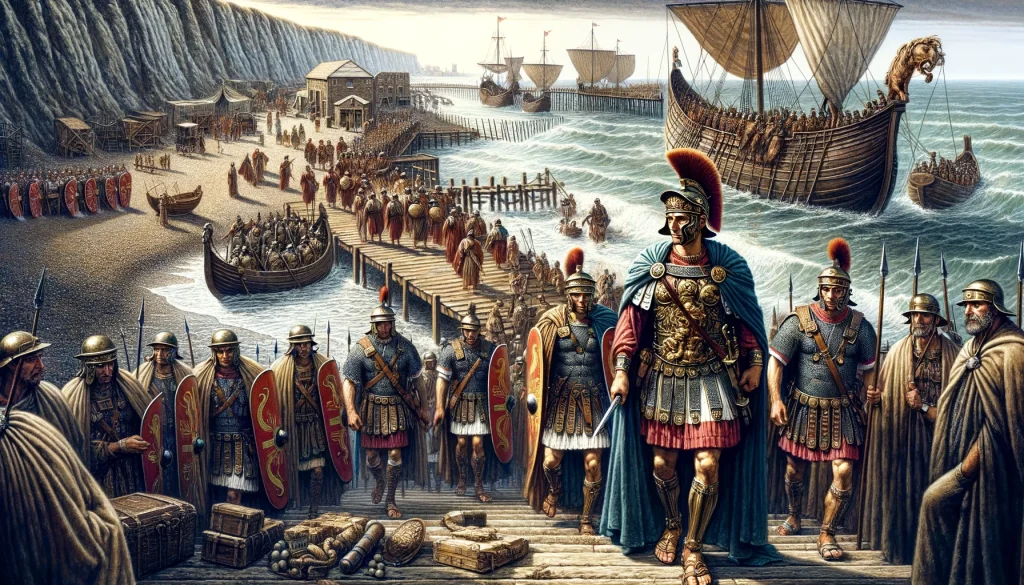
The Roman conquest of Britain began in 43 AD under Emperor Claudius. The initial invasion was a major military operation, leading to the swift and successful subjugation of south-eastern Britain. This phase saw the establishment of Roman rule in these areas, including the foundation of important settlements like Londinium (London). Roman governors, such as Aulus Plautius, played a crucial role in the expansion and consolidation of Roman control, extending the empire’s reach into the southern parts of the island. By 47 AD, the Romans held the lands southeast of the Fosse Way.
Boudican Revolt (60–61 AD)
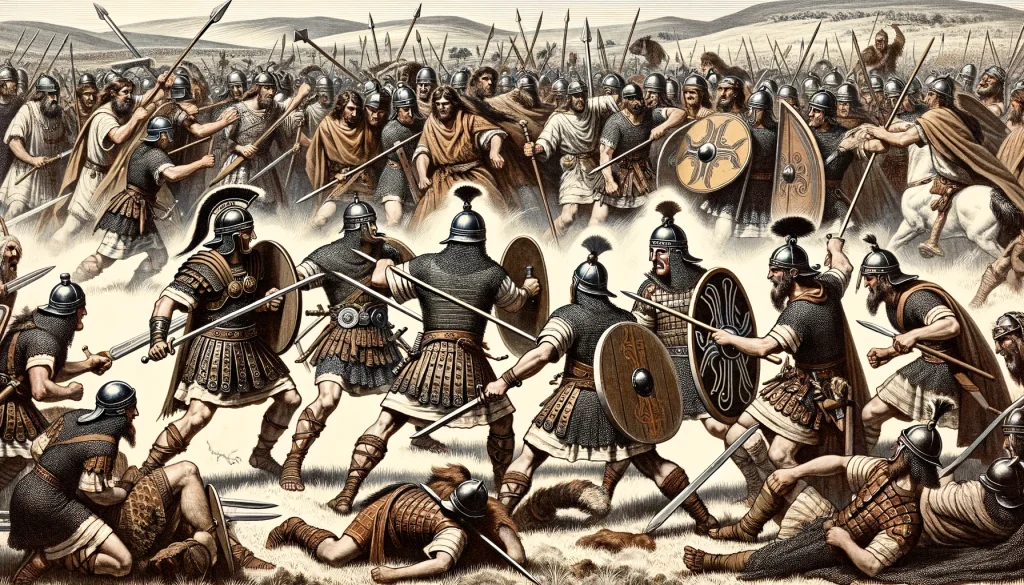
This phase was marked by a significant uprising against Roman rule, led by Queen Boudica of the Iceni tribe. The rebellion was a response to oppressive Roman policies and actions, including heavy taxation and disrespect of local customs and leaders. Boudica’s forces managed to cause considerable destruction, including the razing of Londinium, but were ultimately defeated by the Roman military. The revolt had a lasting impact, leading to changes in the Roman administration of Britain to prevent further rebellions.
Consolidation and Pacification (61–78 AD)
Following the Boudican Revolt, the Romans focused on stabilizing the region. This period involved efforts to pacify the local populations, re-establish Roman authority, and prevent future uprisings. The Roman presence was also gradually expanded into Wales and the Midlands, reflecting a strategy of cautious but steady expansion under successive governors.
Agricola’s Campaigns & Caledonia (78–117AD)
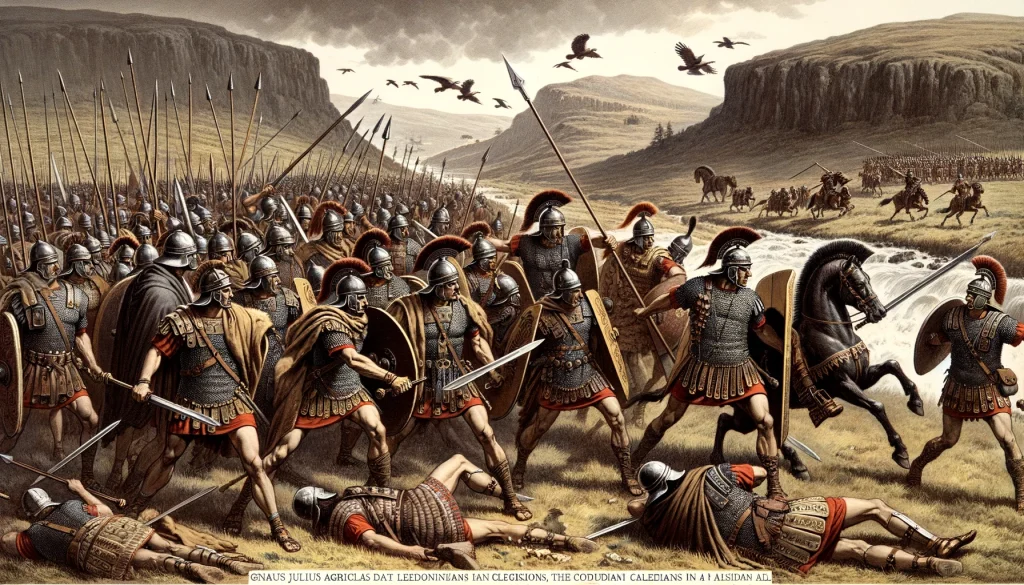
The conquest of Britain continued under command of Gnaeus Julius Agricola (77–84), who expanded the Roman Empire as far as Caledonia. In mid-84 AD, Agricola faced the armies of the Caledonians, led by Calgacus, at the Battle of Mons Graupius. Battle casualties were estimated by Tacitus to be upwards of 10,000 on the Caledonian side and about 360 on the Roman side. The bloodbath at Mons Graupius concluded the forty-year conquest of Britain, a period that possibly saw between 100,000 and 250,000 Britons killed. In the context of pre-industrial warfare and of a total population of Britain of c. 2 million, these are very high figures.
The Hadrianic Period (117–138AD)
At the start of Hadrian’s rule in 117, a new crisis emerged: an uprising in the northern regions. This revolt was quelled by Quintus Pompeius Falco. Later, during his renowned journey through the Roman provinces, Hadrian reached Britannia and ordered the construction of a massive defensive fortification—Hadrian’s Wall. This wall, stretching across northern England, was designed to secure the Roman frontier and separate the Romans from the Pictish tribes in Scotland. It symbolized the limits of Roman expansion in Britain and served as a significant military and administrative point.
The Antonines (138–192 AD)
During the reign of Emperor Antoninus Pius, the Romans made a further push into Scotland, constructing the Antonine Wall north of Hadrian’s Wall. However, this northern expansion was short-lived. The Romans soon retreated back to the more defensible Hadrian’s Wall, indicating the difficulties in maintaining control over the distant and hostile territories of Scotland.
Severus and the Early 3rd Century (192–259AD)
In the early 3rd century, Roman Britain experienced significant developments under Emperor Septimius Severus. Ascending to power in 193 AD, Severus led a notable campaign into Britain in 208 AD, aiming to subdue the unruly northern tribes beyond Hadrian’s Wall. This marked one of the most ambitious Roman military ventures into Scotland, known for its harsh terrain and resistant native tribes. Severus’ campaign, though initially successful in terms of territory gained, faced considerable resistance and guerrilla tactics from the local tribes. His efforts resulted in substantial military expenditures and heavy troop losses. His reign in Britain was also characterized by significant urban development and fortification efforts. Severus’ time in Britain ended with his death in York (Eboracum) in 211 AD, leaving a legacy of military determination and administrative reformation that deeply influenced the Roman presence in the British Isles. Severus or his son Caracalla restructured the administration of Roman Britain, dividing it into two provinces – Britannia Superior and Britannia Inferior – to improve governance and control.
Carausius and the Late 3rd Century
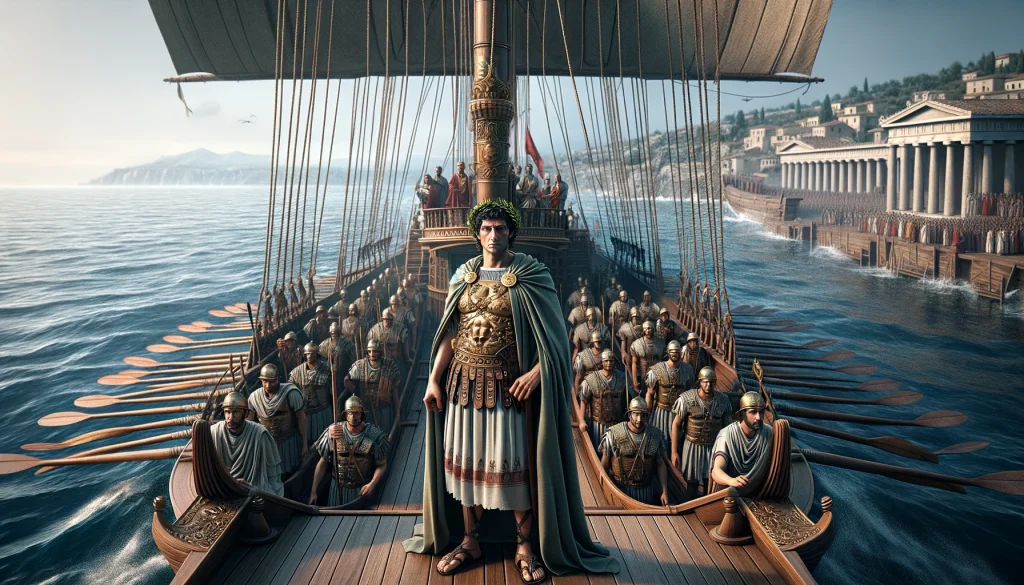
In the late 3rd century, Roman Britain was significantly influenced by the figure of Carausius, a Roman naval commander who, around 286 AD, declared himself Emperor of Britain and northern Gaul, establishing a breakaway state. This period, known as the Carausian Revolt, was marked by Carausius’ adept use of the Roman fleet to control the English Channel, effectively isolating Britain from the rest of the Roman Empire. His reign was characterized by both military prowess and political acumen; he maintained his power by combating pirate threats and promoting economic stability, even issuing his own coinage. Despite his initial success in establishing independent rule and gaining some recognition from the Roman Empire, his dominion was short-lived. In 293, Constantius Chlorus, a loyal Roman emperor, launched a successful campaign against him. Carausius was eventually assassinated by his finance minister, Allectus, who then took control of Britain but was defeated by Constantius in 296, bringing Britain back under direct Roman rule. Carausius’ rule remains a unique and intriguing episode in the history of Roman Britain, highlighting the complexities of imperial control and local autonomy during this era.
Constantine and Early 4th Century

In the early 4th century, Roman Britain underwent significant changes under Emperor Constantine the Great, who was proclaimed emperor in York (Eboracum) in 306. Constantine’s reign marked a period of both political and religious transformation. He initiated substantial military and administrative reforms, including the integration of foreign soldiers into the Roman army, and focused on rebuilding and fortifying cities, enhancing both military and civil infrastructure. Constantine’s policies also fostered the growth of Christianity, a major shift from the traditional Roman paganism. This era saw the strengthening of Roman rule in Britain, with improved defenses and economic stability, despite the ongoing threats from northern tribes and internal usurpations. Constantine’s influence extended beyond governance; his religious tolerance and support for Christianity laid the groundwork for the religion’s expansion throughout the empire, making this era pivotal in the history of Roman Britain.
The Great Conspiracy & Magnus Maximus
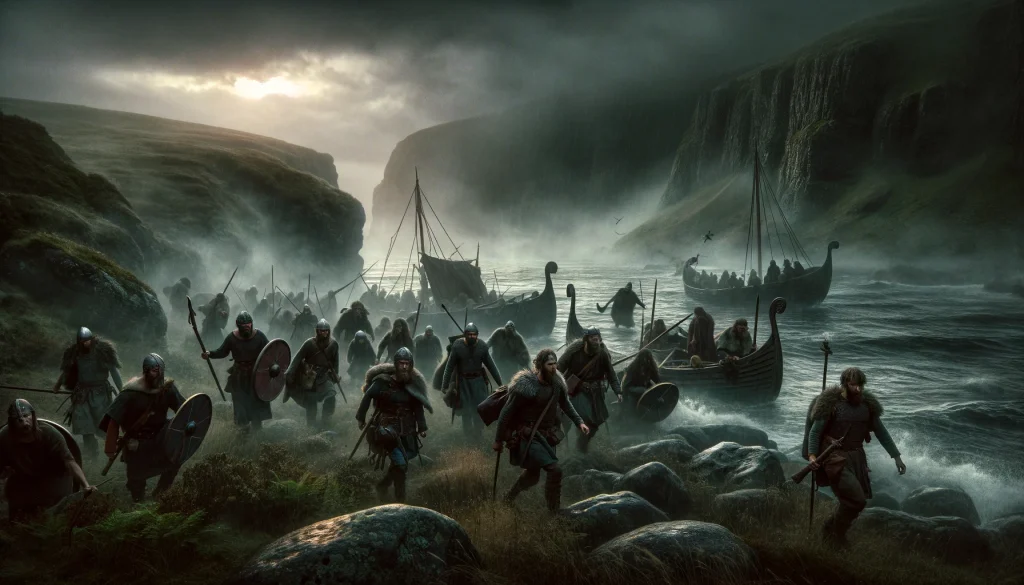
By the end of the 4th century, Roman Britain was navigating a period of significant turmoil and transition. The once formidable Roman control was increasingly under threat from both internal strife and external pressures. Economic challenges, administrative inefficiencies, and the drain of military resources to other frontiers of the vast Roman Empire left Britain vulnerable. The island faced raids and invasions by Picts, Scots, and Saxons, which not only tested its defenses but also its resolve to remain part of Rome’s dominion. The usurpation by figures like Magnus Maximus, who drew troops away for campaigns on the continent, further weakened Britain’s military capacity. Despite efforts to reinforce its defenses, including the fortification of towns and cities, and the reorganization of its military and administrative structures, the stage was being set for a gradual decline in Roman influence. The end of the 4th century thus marked a pivotal moment in British history, leading towards the eventual withdrawal of Roman authority and the onset of the early medieval period.
End of Roman Rule and Aftermath (Early 5th Century)

By the early 5th century, the official Roman military and administrative presence in Britain came to an end. Factors such as the withdrawal of Roman troops to defend other frontiers and the lack of central support from Rome led to the collapse of Roman rule. This transition marked the beginning of post-Roman Britain, setting the stage for the subsequent Anglo-Saxon period and the shaping of early medieval Britain.
